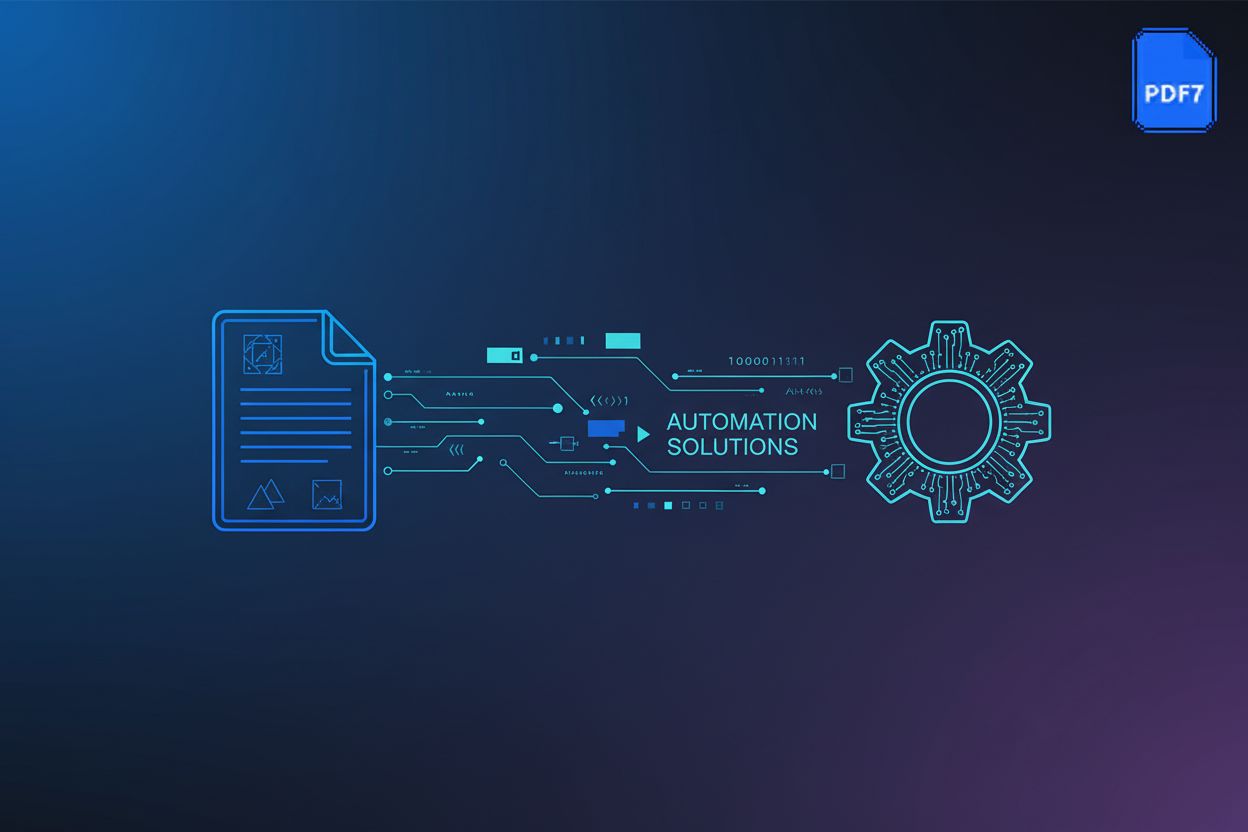Democratizing Document Dexterity: Free and Open-Source PDF Power Tools for Students and Pros
TL;DR
Why Open-Source PDFs? Leveling the Playing Field
Okay, so you're probably wondering why you should even bother with open-source PDFs, right? I mean, Adobe's been around forever. But, before we dive in, let's consider this: How many times have you, like, dreaded opening a PDF because you knew your ancient software was gonna choke? Exactly.
- Cost barriers are real: Adobe Acrobat's subscription fees can be a major ouch for students, freelancers, and smaller businesses. (Pricing & subscriptions for students & teachers | Adobe Acrobat) Like, who wants to shell out that kinda dough just to edit a freakin' resume? It's a problem.
- Limited trials are annoying: Free trials are cool...until they expire. Then you're stuck with watermarks or crippled features, which isn't a sustainable way to, ya know, actually get work done.
Open-source steps in as a legit alternative; it's not just about saving money, though. It's about more than that, tbh.
- Transparency and Trust: With open-source, the code is out there for anyone to inspect. This means you can see exactly what the software is doing, which builds trust and helps ensure there are no hidden backdoors or unwanted data collection. You know what you're getting.
- Community-Driven Innovation: Open-source projects thrive on collaboration. You've got a whole community of developers constantly improving and updating the software, like some kind of digital barn raising. This leads to faster bug fixes and the development of new, innovative features based on real user needs.
- Avoiding Vendor Lock-In: Proprietary software can tie you to a specific company. If they change their pricing, discontinue a product, or go out of business, you're left in a lurch. Open-source gives you freedom and control, ensuring your tools will be available and supported long-term.
- Flexibility is key: Open-source tools offer customization options that proprietary software often locks down. Need a specific feature for your tiny but mighty retail business? Tweak it! Want to automate a process for your healthcare documents? You're in control, not some ceo.
Speaking of improvements, did you know that HURIDOCS just dropped a new open-source ai tool that effortlessly unlocks content and structure of PDFs? This tool uses ai to analyze and extract data from PDFs, making it easier to search, organize, and utilize the information within them. If that's not a game changer, I don't know what is.
Next up, let's look at the flexibility and customization options that make open-source PDFs so compelling.
The Essential Toolkit: Top Free and Open-Source PDF Solutions
Okay, so, ever rotate a pdf only to realize it messes up the whole thing? Yeah, it's annoying. Luckily, there's a bunch of free and open-source tools to fix that kinda thing.
When it comes to free PDF editors, you got some solid choices. They might not have all the bells and whistles of the really expensive software, but honestly, they get the job done for most stuff.
- Okular is a really feature-rich pdf viewer. It's got annotation capabilities, which is a fancy way of saying you can highlight stuff, add notes, and generally mark up documents like you own the place. Think of it like a digital highlighter and sticky note combo.
- Xournal++ is cool if you're into handwritten notes and markups. If you have a tablet or stylus, it’s kinda awesome for signing documents or just scribbling ideas directly onto your PDFs. It's not gonna replace your fancy graphic design software, but it's perfect for quick and dirty edits.
- Master PDF Editor has a free version, but there's limitations, so keep that in mind. The free version typically restricts features like editing text in existing PDFs, adding images, and exporting to certain formats. You'll likely be limited to viewing and basic annotation.
These tools are useful if you're doing research, or collaborating on documents. Instead of printing stuff out and marking it up by hand (like some kinda caveman), you can do it all digitally.
Up next, we'll look at some cool tools for automating your PDF workflow.
Deep Dive: Advanced PDF Manipulation with Command-Line Tools
Command-line tools? Yeah, I know what you're thinking: "Ugh, the terminal?" But trust me, it's worth it. Think of it as unlocking a secret level of PDF manipulation.
PDFtk is like, the OG of command-line PDF tools. It's been around forever, and it's still super useful.
- You can merge multiple PDFs into one big file, which is great for combining chapters of a book or reports from different departments.
- Splitting PDFs is also easy. Need to extract just a few pages from a large document? Bam, done.
- And rotating pages? Super simple. No more craning your neck to read that one sideways page.
Imagine you're in finance, and you need to combine monthly sales reports but need to remove a page. PDFtk makes it easy. It's like having a digital paper cutter and stapler all in one.
Ghostscript is a bit more complex, but it's incredibly powerful. It's not just for PostScript, despite the name.
- One of its coolest features is converting PDFs to image formats. Need a JPG of a specific page? Ghostscript can do it.
- It's also great for reducing file size. If you have a PDF with a bunch of high-resolution images, Ghostscript can compress it without sacrificing too much quality.
- Plus, it can help you troubleshoot rendering issues. Sometimes, a PDF will look weird on certain devices or in certain viewers. Ghostscript can help diagnose these problems by allowing you to convert the PDF to a simpler format or by providing detailed error messages about malformed elements within the PDF structure.
Poppler Utils are another set of command-line tools that are pretty handy. They let you extract text, get info about a PDF, and even convert it to different formats. For example, you can use pdftotext to extract all the text from a PDF into a plain text file, which is super useful for searching or analysis.
Next up, we'll look at how to automate your PDF workflow with scripting.
PDF Security on a Budget: Protecting Your Documents
Ever sent a PDF and then panicked that it wasn't secure? Yeah, me too. Good news is, you don't need to spend a fortune to lock down your documents.
One way to keep your pdf's safe is with password protection. You can use PDFtk, as mentioned earlier, to add a password so only people with the password can view or edit the file.
It's important to know that not all encryption is equal. PDFs typically use encryption methods like RC4 or AES. AES is generally considered more secure and is the preferred choice for sensitive documents. You'll want to do a little research on which method to use, but for most everyday needs, standard password protection is a good start.
Don't use "password" as your password!
- Use a strong, unique password for each document. I know it's annoying, but it's important.
- Consider using a password manager to keep track of everything, or, ya know, write it down, just don't lose it!
- Digital signatures are also a great way to verify that a document is legit and hasn't been tampered with. While setting up a full digital signature infrastructure can be complex, many open-source tools can help you create or verify them, adding an extra layer of trust to your documents.
Next up, we'll look at optimizing your PDF workflow.
Optimizing Your PDF Workflow: Tips and Tricks
Alright, let's wrap this up, eh? You've seen a bunch of tools, but how do you actually make 'em work for you? It's all about the workflow, baby!
- Automate repetitive tasks: Use scripting with tools like PDFtk or Ghostscript to batch process PDFs. Think bulk watermarking or merging invoices, you know, the stuff that makes you wanna scream. For instance, you could write a simple script to automatically merge all your daily reports into a single weekly PDF.
- Integrate into existing systems: APIs and command-line tools are your friends. Custom solutions for document management? Totally doable. You can even use these tools to automatically convert PDFs to other formats as they enter your system.
- Don't be afraid to experiment: try out different tools and methods. See what fits your needs best.
Basically, don't get stuck doing things the hard way.





